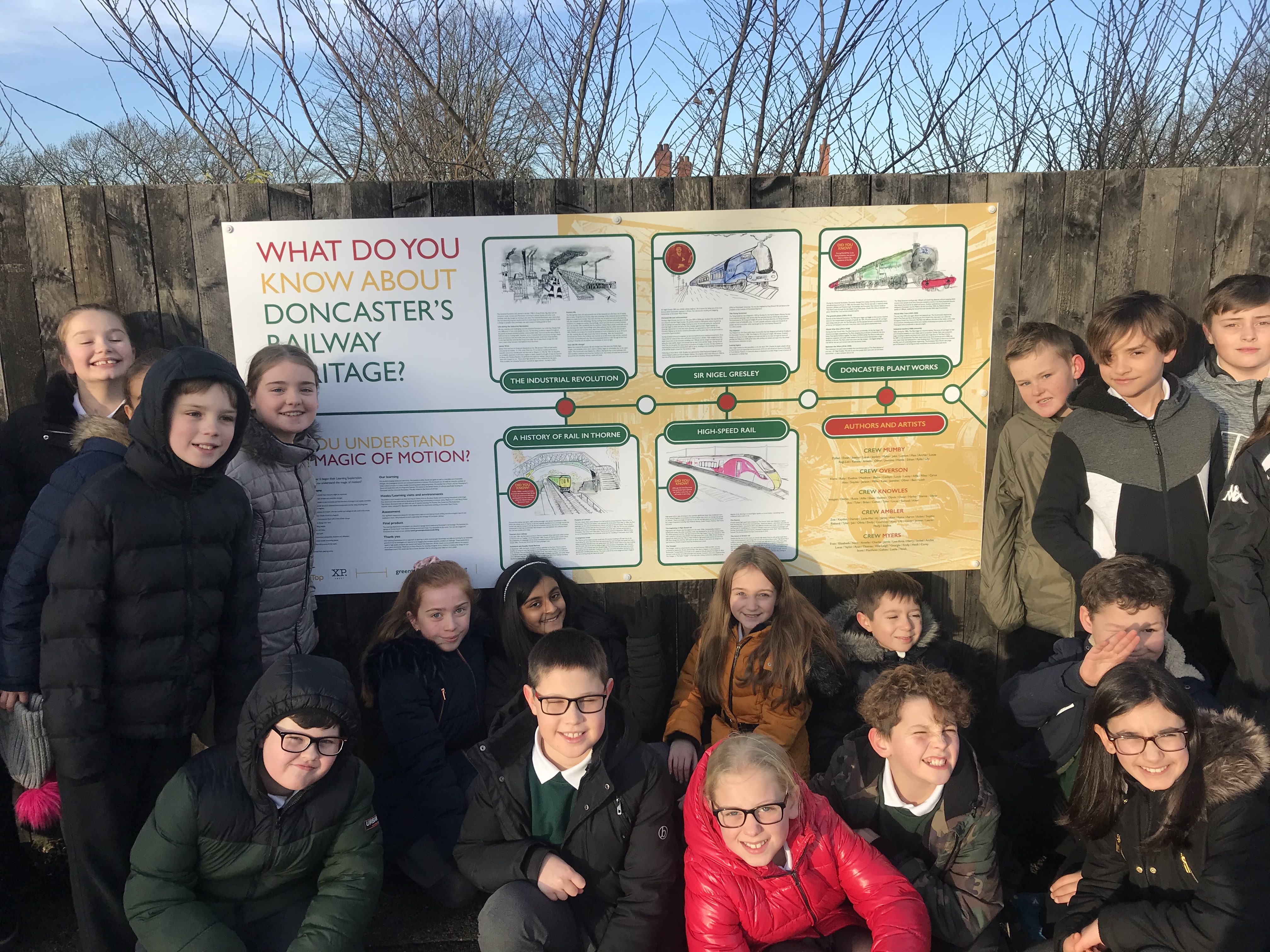A great piece by Leah:
Theme Review
‘Do You Understand The Magic Of Motion?’
As part of our exploration “Do You Understand The Magic Of Motion?” we focused our learning on three Case Studies: Science, History and Art. Using our skills, we have produced a high-energy product based on rail heritage in my local area. Our text – Harry Potter and the Philosopher’s Stone – was used throughout English and Theme to immerse us; it was also used to theme a writing genre. At the beginning of the term, we took a trip to Harry Potter studios to energize our imagination.
Case Study 1 – Science
This study was particularly enjoyable. We began by completing tasks to help us define the term ‘reversible and irreversible changes’. This featured sorting specific objects and their changed forms into groups to find out whether the change is reversible (able to change to its original state) or not. An example of an irreversible change is baking cupcakes. Another large aspect of this study was creating and describing circuits. Whilst experimenting I was an Exploring Eddie. I found that a cell, also known as a battery, powered the entities connected to the wires. In addition, the more cells used increased the energy levels and voltage. Insulators, such as wood, do not conduct electricity however a conductor does. Conductors are varied types of metal which is why most wires are fashioned from this.
Case Study 2 – History
I believe I was a Curious Cleo during this section of my thematic learning as we completed research multiple times. We began by placing trains onto a timeline based on the dates of when they were made and the technology they had. The earliest railways did not have engines but, in fact, were powered by horse! The timeline continued to the modern day where the Azuma train (often seen in Doncaster Railway Station) was placed. Doncaster also had a great legacy during the Industrial Revolution and a large impact towards both World Wars. Doncaster Plant Works was a famous industry where a few record-breaking trains were built. I looked into the stages it went through and how it was used over time (continuity and change). I found that new demands at around the 1980s led to the Industrial Decline.
The Industrial Revolution played a large part in the evolution of travel and the steam engine. An especially important innovation to design was made by James Watt in 1764 as he was given a model to repair. He pondered on the idea of improving the system as the current locomotives were inefficient and expensive to transport goods. With his business partner he eventually perfected the design and soon began patenting others. He inspired the country and left a lasting impact towards travel and trade. Even though this was a positive outcome, Industrial Britain was a polluted, crowded environment and people worked in terrible conditions for little money.
Case Study 3 – Artwork
I believe this was my favourite Case Study. I learnt how to portray one point perspective and use different techniques to depict light, shadow and detail. A vanishing point was placed upon the horizon line and ghost lines were used to guide me when drawing. We looked at different styles that belonged to the artist Quentin Blake and used watercolour and pen to create a truly interesting piece. Once I fully understood the skill, I used it to sketch a famous train – George Stephenson’s ‘Rocket’.
Do You Understand The Magic Of Motion?
So, now to answer the question “Do You Understand The Magic Of Motion?”. I can answer this through my knowledge of Science and History. The work of Sir Nigel Grelsey and the Doncaster Plant Works was like magic in action as they built speed defying trains and worked long hours to contribute in the Wars. It also showed us the development of trains from then to now. The motion of the trains relied on heat and coal being burnt ( an irreversible change ) which pushed the pistons to move the wheels. This motion urbanized the world and turned parts of Britain – especially Doncaster and Thorne – into industrial powerhouses.



















